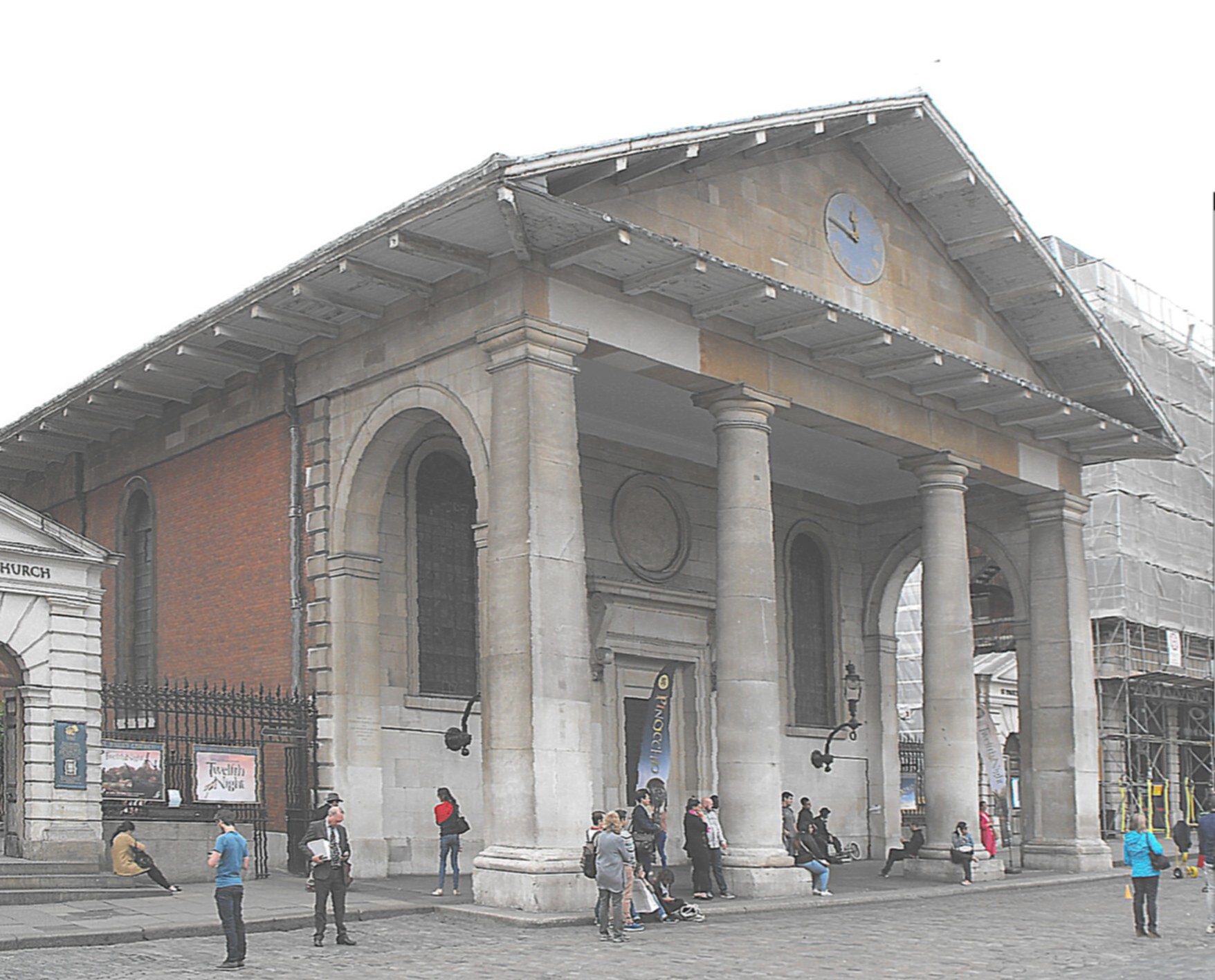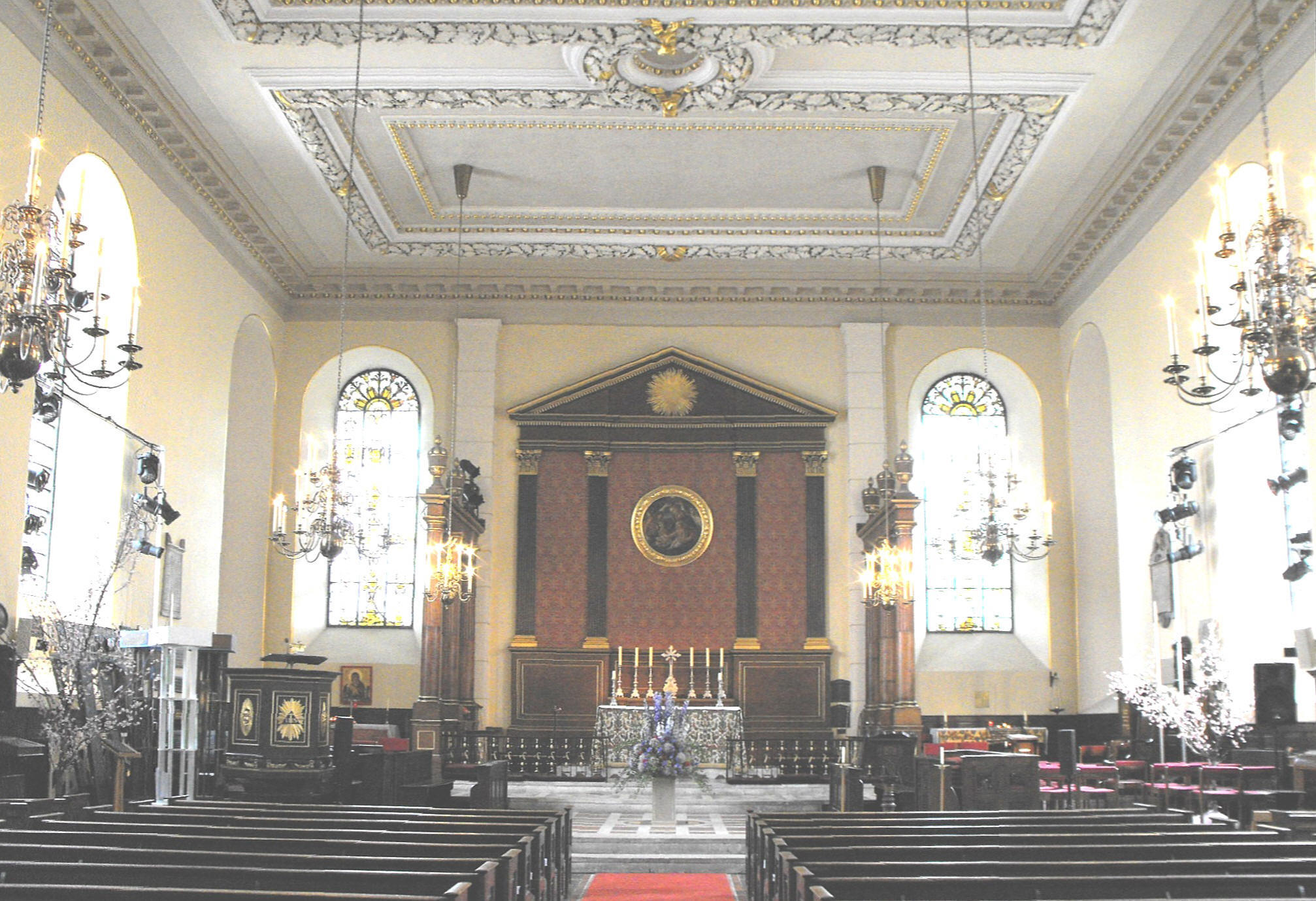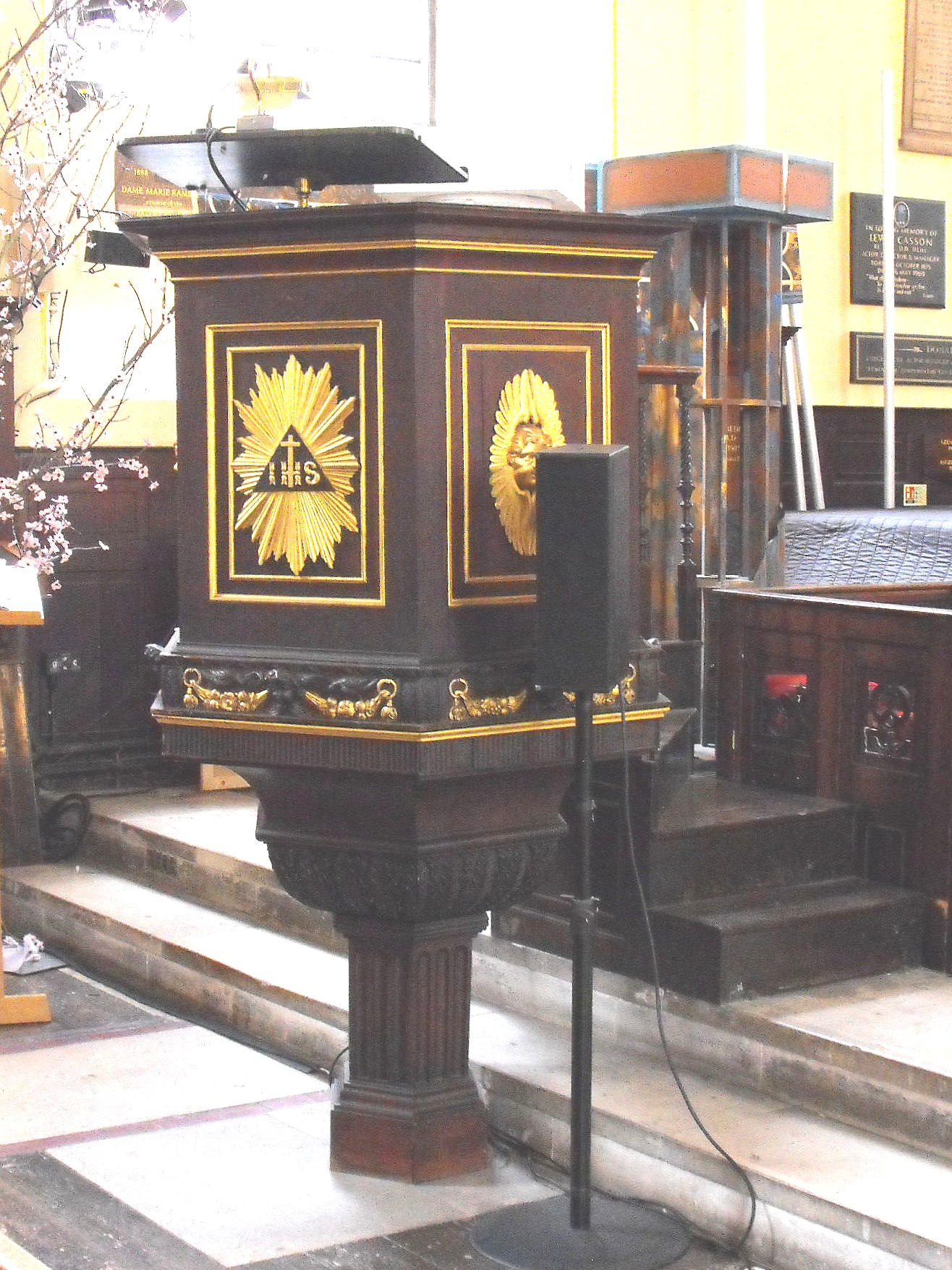|
English Church Architecture.
WESTMINSTER, St. Paul Covent Garden (TQ 303 808), City of Westminster.
An iconic church by Inigo Jones (1573-1652) that effectively launched the Palladian style in Great Britain.
This is the famous church designed by Inigo Jones (shown above, from the southeast) as an inescapable part of the development of Covent Garden undertaken by Francis, fourth Earl of Bedford, from 1631. Although Bedford owned the land, a royal proclamation then in force, preventing building around London, had first to be overcome by a combination of Bedford's subtle dealings and the payment of £2,000 in order to obtain an extraordinary licence (John Summerson, Inigo Jones, Harmondsworth, Penguin, 1966, pp. 83-96). Bedford realised he would have to build a church to serve the speculative housing he wished to erect, but, according to anecdote, told Jones he was not prepared to pay for anything 'much better than a barn', whereupon Jones is supposed to have replied, 'Well then, you shall have the handsomest barn in England'.
Jones had travelled extensively in Italy in his youth and spent a considerable period of time in the city of Venice where he became very interested in the works of Palladio (1508-80) - an architect who, in his turn, had made a close study of the Roman architect Vitruvius (c. 90-15 B.C.). When Jones sought to copy Palladio's style in England, therefore, he was actually attempting to revive a revival! It was an attempt that was destined to attract no substantial imitators until the Hanoverian succession in 1714, but from then until mid century, the style would so catch upon the spirit of the age, that Jones would become the most famous (alas, dead) architect in England.
Perhaps the biggest challenge Jones faced in designing St. Paul's, Covent Garden, was that the site lay inconveniently at the west end of the piazza. The meant the principal façade had, of necessity, to be at the east end of the building, but Jones appears to have been prevented from solving the problem by reversing the liturgical axis of the church as others would do later (see, for example, at St. Margaret's, Well, Lincolnshire) and so constructed instead a massive, elemental portico formed of two square piers and two Tuscan columns, prostyle (that is, with the columns standing free), against an entirely sham E. doorway with a cornice supported on consoles. The gable above the portico positively delights in flaunting the rudeness of its design, for it is entirely blank save only for the projecting unmoulded roof beams that emerge beneath the roof and ceiling, and the same arrangement is repeated at the west end of the church (illustrated immediately above), where the true entrance to the building, without portico or protection from the weather of any kind, presents an appearance more basic and primitive still. The plan of the church is essentially that of a double cube, with the addition to the west of small flanking vestries, like little transepts. The angles of the building are rusticated and the windows are tall, round-headed and plain, save only for a projecting surrounding rectangular moulding, although there are two small circular windows, one above the W. door and the other (blocked) one above the mock door to the east.
So much, then, for the exterior of the church. The interior (seen above, looking east) is not of much consequence, for the building was gutted by fire in 1795 and restored shortly afterwards by Thomas Hardwick (1752 - 1829) whose work was competent but unremarkable although he cannot be said to have been devoid of talent, in witness of which there is his fine church of St. Mary, Marylebone Road. Here at St. Paul's, the wooden W. gallery supported on Doric columns is presumably Hardwick's work, but the only feature of real note is the pulpit by Grinling Gibbons (1648 - 1721) (below), which was rescued from the fire.
|



